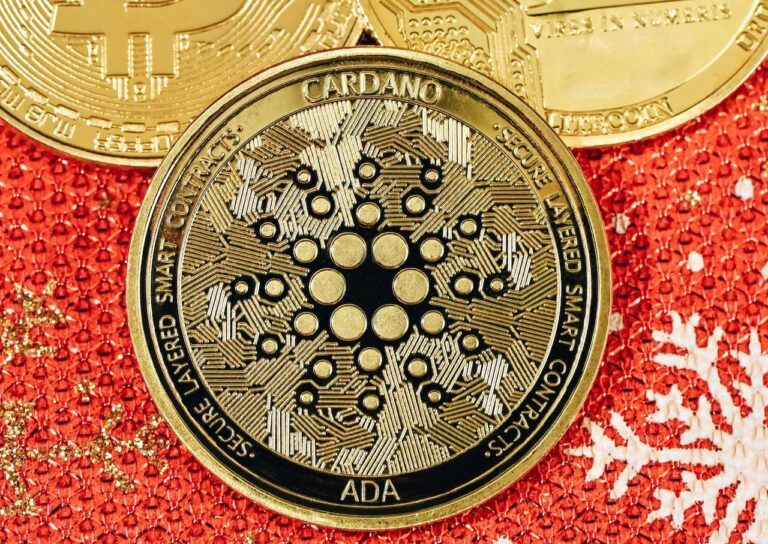
$ADA: IOG Explains Why Cardano’s Vasil Upgrade Has Been Delayed by ‘A Few More Weeks’
July 29, 2022On Thursday (July 28), Kevin Hammond, Technology Manager at Input Output Global (IOG), the company responsible for Cardano’s research and development, explained why the Vasil hard fork), which until yesterday was expected to take place on the Cardano mainnet by the end of July, has been delayed again.
Why Is Cardano’s Next Major Upgrade Named ‘Vasil’?
On 10 December 2021, Charles Hoskinson, Co-Founder and CEO of Input Output Global (“IOG”), the company responsible for Cardano’s research and development, explained that he was going to honour his Bulgarian friend and Cardano ambassador Vasil Stoyanov Davov — who sadly passed away in his apartment in Plovdiv, Bulgaria on 3 December 2021 “after a long combat with pulmonary embolism” — by naming the next hard fork after him. Vasil was an artist, entrepreneur, blockchain consultant, Haskell practioneer, and ginkgologist. Furthermore, it would not be an exaggeration to say that he was a highly beloved and respected member of the Cardano community.
https://youtube.com/watch?v=bEGCrUe378M%3Ffeature%3Doembed
Why Vasil Upgrade Did Not Take Place on June 29 As Originally Planned
On June 20, IOG Co-Founder and CEO Charles Hoskinson explained why the Vasil hard fork would not be going live on the mainnet on June 29 as originally planned.
Hoskinson said:
“We’re pretty close to the target. We’re code complete, and what code complete effectively means is you probably could flip the switch and get away with it, and certain projects would do that, but what happened after the collapse of Terra (LUNA) is that I gave a directive to a lot of engineers to say we should probably measure three times and cut once given the nature of things.
“And so, additional tests were added in the Plutus suite and additional work was done for QA above and beyond what we normally do for hard forks. So, that was one dimension of the puzzle that made it more complicated.
“The other dimension of the puzzle was that after Consensus we did have an enormous amount of contact with dApp developers and other people, and there was a desire to be a bit more inclusive in the QA process and the testing process. A lot of them said ‘hey, we need several weeks on testnet to be able to play around with these things’. And at the end of the day, this is not a hard fork for the average Cardano user. The Vasil hard fork has always been a hard fork specifically for dApp developers.
“It speeds up the transaction rate with pipelining. And then all the CIPs are basically there to make Plutus smart contracts easier to write. If you’re a developer, whether you’re doing it on the mainnet or the testnet, you should have the same development environment in that respect.
“So what’s more meaningful to the community, frankly, is making sure that the testnet runs Vasil so that people who are building dAps on Cardano can deploy those dApps… We don’t anticipate that this July date is going to in any way impact the actual rollout of all the dApps have been waiting for Vasil because now they have a testing environment to do that...
“July is not too far off, you know, and all things considered, it’s kind of in an acceptable zone in my view. It’s a little frustrating because I really wanted to make sure that we got something in June, but getting it on the testnet I think is good enough for the developers because they’re the primary constituent here, and that’s not going to slow down ecosystem growth.“
https://youtube.com/watch?v=fxWfdd2MJOc%3Ffeature%3Doembed
What Can the Cardano Community Expect From the Vasil Upgrade?
On July 4, Tim Harrison, VP of Community & Ecosystem at IOG, published a blog post in which he talked “the significant performance and capability enhancements to Cardano” that the Vasil upgrade (which he called “the most significant network upgrade since the deployment of staking via Shelley“) — expected to go live on the Cardano mainnet at the end of July — will deliver.
Harrison said:
“As well as bringing improvements to smart contracts, the upgrade is part of the Basho phase of the Cardano roadmap, which focuses on scaling and network & ledger optimization and will bring multiple improvements to the ledger. Vasil will be deployed at the protocol level using Cardano’s hard-fork combinator (HFC) – innovative technology which enacts seamless protocol transitions and ledger upgrades minimizing disruption for end-users…
“The upgrade… will implement widely anticipated features such as diffusion pipelining and upgrades to Plutus – Cardano’s core smart contract language. Many of the improvements have been scoped and developed with the support of the wider development community and stem from Cardano Improvement Proposals (CIPs). Additionally, a number of new cryptographic primitives will be provided, and script validation processes will further see adjustments and optimizations contributing to consistency in block propagation times and higher transaction processing rates.“
With regard to diffusion pipelining, he had this to say:
“In essence, it streamlines the process of sharing information about newly created blocks among network participants by ensuring that blocks can be shared (propagated) in the network well within five seconds after their creation. For this, diffusion pipelining propagates blocks before their full validation, thus ‘overlapping’ the time spent on diffusion with the time needed on validation.
“Pipelining also ensures that the block header referencing the hash of a previous block is propagated correctly. The body of the block is retained within the metadata included in the next block, which is essential for DDoS attack resistance even without full block confirmation. Ultimately, diffusion pipelining will add scalability by enabling further block size increases and Plutus script improvements, as IOG continues to optimize the network throughout the rest of the year.“
Harrison then went to talk about Plutus script enhancements as well miscellaneous other important enhancements, such as Script collateral adjustment (CIP-40).
Why the Vasil Upgrade Has Been Delayed Another Few Weeks
On Thursday (July 28), at the July edition of IOG’s Cardano360 monthly show, Tim Harrison asked Kevin Hammond for an update on the Vasil upgrade.
IOG’s Technical Manager said:
“As usual, the team has been working really hard to deliver benefits of the Vasil hard fork to the community. And the good news is that this week we’ve just tagged a new 1.35.2 release to fix some issues we found, and we’re doing the final testing and benchmarking on that right now. So, 1.35.2… is a release for testnet only. It fixes some issues that stake pool operators, DApp developers, internal testing, and other people have identified. And the goal is it will flush out any final issues as we go to the Vasil hard fork.
“So, obviously, Tim, what we’re doing is we’re focusing on testing thoroughly, getting it right, and not rushing, and the communities support in helping us to do that has been absolutely brilliant. We’ve been working very closely with many leading community members to get this absolutely right…
“This is software development. Inevitably, some issues can crop up. And what we have to do is we have to assess those issues as they come in, determine what impact they could have, and we need to make sure that any issues that could affect the use of the node as we’re going to Vasil are fully worked out.
“Obviously, from where we are, there could be a few more weeks before we go to the actual Vasil fork… All the users have to be ready to progress through the hard fork to make sure there’s a smooth process both for them but also very importantly for the end users of the Cardano blockchain. As we’re rolling out to the new node versions, we will be communicating very closely with the stake pool operators and other users.”
https://youtube.com/watch?v=mHHVaxkHFrE%3Fstart%3D79%26feature%3Doembed
Image Credit
Featured Image by Quantitatives via Unsplash
Source: Read Full Article


